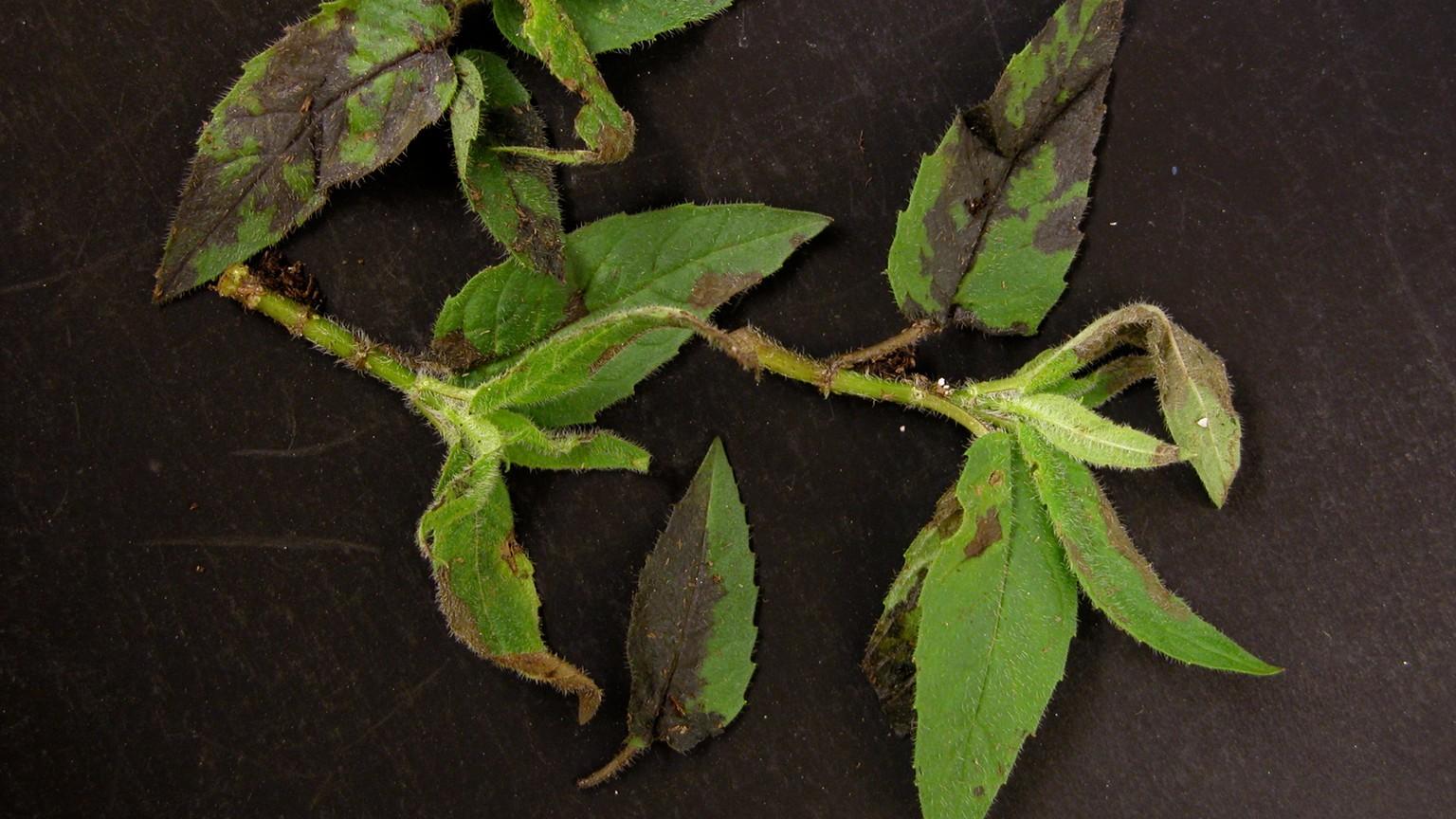Bacteria are single-celled, microscopic organisms, bounded by a cell wall, that cause plant diseases. Bacteria are much smaller than fungi and nematodes but can cause severe symptoms. Bacterial pathogens can cause soft rots, vascular wilts, leaf spots, and blights as well as secondary infections. Commonly encountered genera include Erwinia, Xanthomonas, Pseudomonas, Corynebacterium, and Agrobacterium.
Bacterial leaf spots and blights can occur at the same time as fungal leaf spots and diagnosis can sometimes be difficult. Bacterial leaf spot symptoms on older leaves typically have a more angular appearance than fungal leaf spots, with the spots bounded between the veins. If a new leaf or shoot collapses quickly, often with a "slimy dark appearance" then it is called a blight. Often if the leaf is held up to a light source, and viewed backlighted, a water soaked area around the dead tissue can sometimes be seen and on some perennials, the bacterial leaf spots will have a definite yellow outline or halo. Severely rotted tissue will often have a "rotten smell" because of secondary infection from other common bacteria found in soil and on plant surfaces. Warm weather and prolonged wet periods frequently encourage bacterial infections. Examples: Larkspur (photos below).


Monitor
Bacterial diseases are frequently introduced into the growing area by planting previously infected plants. They generally don't persist long in soil or planting media unless plant debris from previous crops is abundant. However, old potting media stored on unprotected ground, or the use of contaminated tools should be avoided. Under field conditions, low areas that collect water runoff will be more prone to bacterial problems. Bacterial diseases are spread by water and are carried in infected plant debris. In the lab, infected plants can be inspected for bacterial streaming under a microscope.

Management
Only healthy transplants should be planted into home gardens because of the potential for introduction of bacterial pathogens into the soil or as a source of infection. Inspection of new plants or detection and prompt removal of established plants with symptoms is often the best way of managing disease outbreaks. Foliar infections can sometimes be reduced by removal of spotted leaves. Alleviate poor air circulation and crowded conditions, and if possible avoid overhead irrigation late in the day to lower humidity levels.
